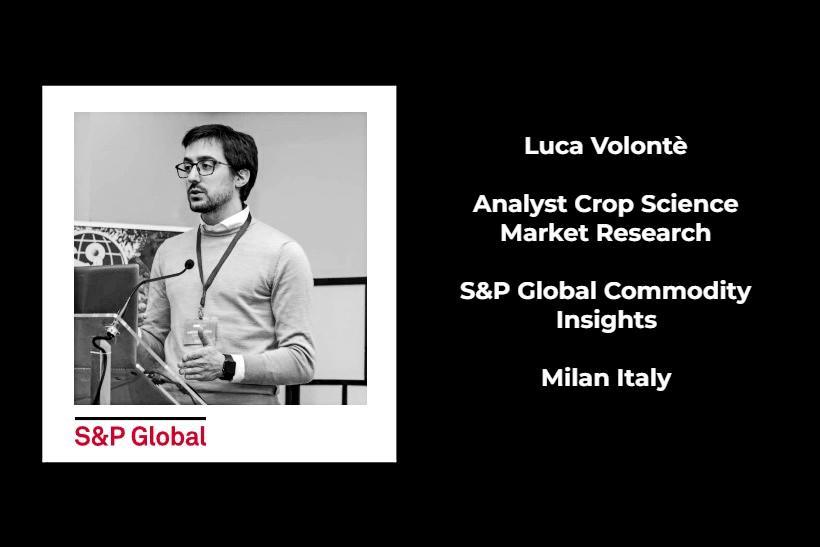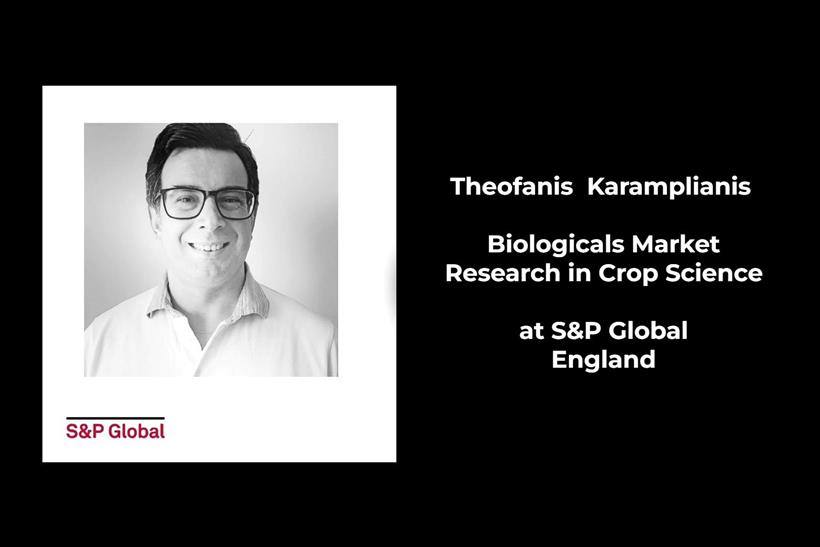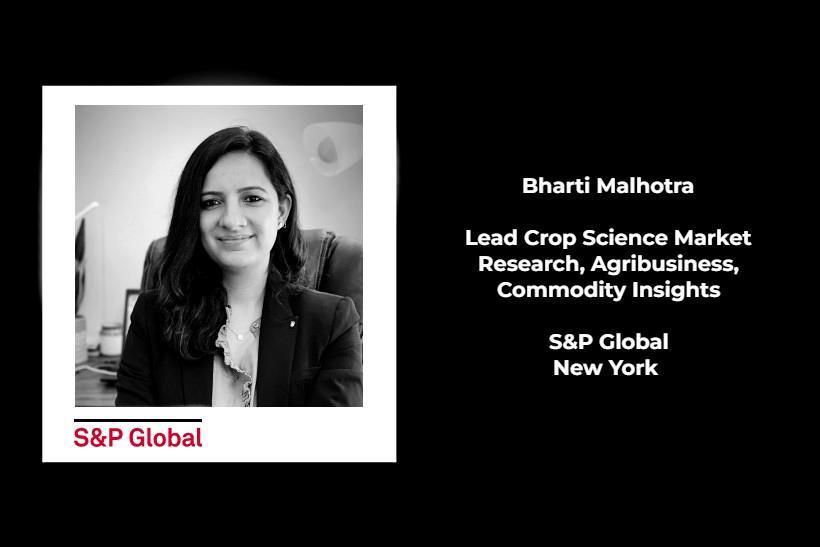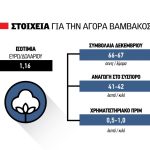Agro World News: S&P Global on how biologicals are reshaping the future of agriculture

At a time when agriculture is redefining its balance between productivity and sustainability, biological solutions are no longer seen as an alternative they are becoming the strategic core of global transformation. The S&P Global Commodity Insights – Crop Science division closely monitors this transition, analyzing markets, regulations, and technological trends that are reshaping the agrifood landscape worldwide.
In this exclusive interview, Dr. Bharti Malhotra (Lead Crop Science Market Research), Luca Volontè (Analyst Crop Science Market Research), and Theofanis Karamplianis (Analyst Crop Science Market Research) of S&P Global Commodity Insights share their insights with George Bacolas, Founder and Editor-in-Chief of Agrocapital, offering a data-driven perspective on where organic agriculture stands today and where it is heading next.
G.Bacolas: From your perspective, how do you assess the current positioning of organic products, including biocontrols, biostimulants, and biofertilizers, compared to conventional crop protection markets?
Luca Volontè: The biologicals sector is highly specialized yet among the fastest-growing globally, with an expected CAGR of +8.6% for 2025–2030. In 2024, its market value stood at approximately $9 billion, with 46% coming from biocontrols (BCAs), 38% from biostimulants, and 16% from biofertilizers.
Although BCAs still represent a minor share of the overall crop protection market, their role is becoming increasingly central within integrated crop management systems. Regulatory pressure to reduce chemical use, stricter approval procedures, and growing consumer and retailer demand for low-residue or residue-free produce are accelerating adoption.
Similarly, biofertilizers are benefiting from tighter regulations on mineral fertilizers aimed at reducing environmental runoff, while biostimulants are gaining strategic importance amid climate volatility, enhancing crop resilience against drought, heat, and extreme weather events.

G.Bacolas: Which data points — such as sales trends, product approvals, or R&D pipelines appear to be the strongest drivers of global growth for organic and biological inputs?
Theofanis Karamplianis: The key growth drivers are product approvals and the R&D pipeline. Historically, biologicals focused on high-value crops, primarily fruits and vegetables, but we’re now witnessing accelerated expansion in broad-acre crops.
This segment represents a far larger market in terms of acreage but requires tailored solutions for example, seed-treatment biologicals. The number of newly registered products has been steadily increasing, and market value is expanding accordingly. According to Commodity Insights Biologicals Tracker, major industry players are advancing technologies that improve efficacy, shelf stability, and compatibility between biologicals and chemical products. These innovations are set to define the next phase of growth for the sector.
George Bacolas: How do you evaluate the role of digital farming technologies such as drones, sensors, and farm-management platforms in supporting the adoption and efficiency of organic products?
Luca Volontè: In many markets, biologicals are still perceived as a “nice-to-have” rather than a necessity, partly due to inconsistent results and a lack of expertise among growers and advisors. Digital agriculture can change that perception.
Technologies such as sensors, precision-ag tools, and farm-management software can help identify the optimal timing and conditions for product application, improving efficacy and consistency. Moreover, these platforms promote data-driven awareness and education, empowering farmers to integrate biologicals more confidently into their agronomic practices.
George Bacolas: Regulatory frameworks are rapidly changing worldwide. How are restrictions on active substances in Europe, alongside sustainability policies, reshaping the competitive balance between conventional agrochemicals and biologicals?
Theofanis Karamplianis: Regulatory scrutiny continues to intensify globally. Since 2019, eight of the world’s top 20 active ingredients (AIs) have faced legal or regulatory restrictions. According to S&P Global’s Active Ingredient Approval Tracker, during the same period, 49 AIs were banned or phased out in Latin America, 41 in Europe, 38 in the Asia–Pacific region, and 11 in North America, with insecticides being the most affected category.
This environment pushes the industry to seek alternative solutions, yet in Europe, the registration process for biocontrol agents (BCAs) remains nearly as demanding as for chemical products. Nevertheless, the European Commission’s “Vision for Agriculture and Food” policy (2025) represents a turning point, shifting from sanction-based approaches to incentive-based sustainability. It pledges to “streamline access to biopesticides” and to consider “further bans on [chemical] pesticides only when viable alternatives exist,” signaling a more balanced framework than the previous Green Deal agenda.

George Bacolas: In the seed sector, how do you see emerging techniques such as New Breeding Technologies (NBTs) and gene editing contributing to biological solutions and sustainable crop systems?
Dr. Bharti Malhotra: NBTs empower scientists and companies to develop crop varieties resistant to pests, diseases, and environmental stresses, while enhancing yield and nutritional quality. When combined with biologicals, these innovations can deliver sustainable, effective responses to climate and production challenges.
S&P Global Commodity Insight’s Seed Innovation Database, which tracks R&D pipelines and regulatory developments, currently lists around 1,000 NBT-based products in progress, covering more than 60 crop types. Unlike earlier GM traits, which focused mainly on herbicide tolerance and insect resistance, NBTs address a broader range of attributes — including consumer preferences, processing quality, reduced NPK requirements, drought tolerance, and enhanced oil or nutrient content. Crucially, NBTs are treated similarly to conventional breeding in many countries where regulatory frameworks are developed, which reduces regulatory costs and time to market, allowing faster innovation cycles. However, there is still lack of harmonization in regulations as some of the countries continue to treat NBTs as GMOs, and in some cases, the regulations are still undeveloped or definitions unclear, potentially delaying the adoption of these products in the market. Nevertheless, in the long run, these products could be used in combination with biologicals and are expected to complement biological solutions, together providing a sustainable solution to agriculture.
George Bacolas: Based on S&P Global’s data and forecasts, which regions, companies, or product categories are expected to define the trajectory of organic and biological agriculture over the next decade?
Luca Volontè: Currently, Latin America led by Brazil, is the region attracting the largest volume of investment, followed by Asia-Pacific (APAC). Europe also has strong potential for acceleration if it succeeds in establishing a dedicated regulatory framework for biologicals.
Biostimulants and biofertilizers are expanding fastest, primarily due to their relevance for row crops, while biocontrols continue to dominate fruit and vegetable markets, leaving room for further penetration into broad-acre farming.
At the corporate level, we are observing a reconfiguration of the competitive landscape: major R&D multinationals are deepening their commitments to the biologicals segment, while tier-2 and tier-3 companies consolidate, creating new bio-focused multinationals. In parallel, fertilizer manufacturers are increasingly entering the market, diversifying into biofertilizers and biostimulants to meet the growing demand for sustainable crop inputs. The discussion with the Commodity Insights Crop Science team highlights a decisive moment for global agriculture. The convergence of science, technology, and sustainability is no longer a future aspiration; it is the foundation of a new agronomic reality.
From biological crop protection that minimizes environmental impact, to next-generation seeds and digital platforms that optimize precision and efficiency, the sector is evolving into a model where innovation and ecological responsibility advance hand in hand.
For Greece and Europe alike, the challenge lies in bridging policy ambitions with on-the-ground practice, ensuring that farmers have access to the knowledge, tools, and incentives needed to adapt. In that sense, the insights and data provided by S&P Global Commodity Insights serve as a compass for understanding where the agricultural world is heading, and what strategic choices will define its sustainable future.
Ακολουθήστε το Agrocapital.gr στο Google News και μάθετε πρώτοι τις ειδήσεις
Οι απόψεις που εκφράζονται στα σχόλια των άρθρων δεν απηχούν κατ’ ανάγκη τις απόψεις της ιστοσελίδας μας, το οποίο ως εκ τούτου δεν φέρει καμία ευθύνη. Για τα άρθρα που αναδημοσιεύονται εδώ με πηγή, ουδεμία ευθύνη εκ του νόμου φέρουμε καθώς απηχούν αποκλειστικά τις απόψεις των συντακτών τους και δεν δεσμεύουν καθ’ οιονδήποτε τρόπο την ιστοσελίδα.




